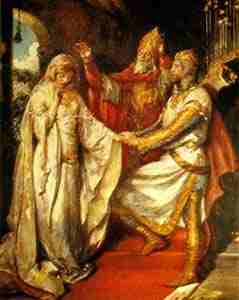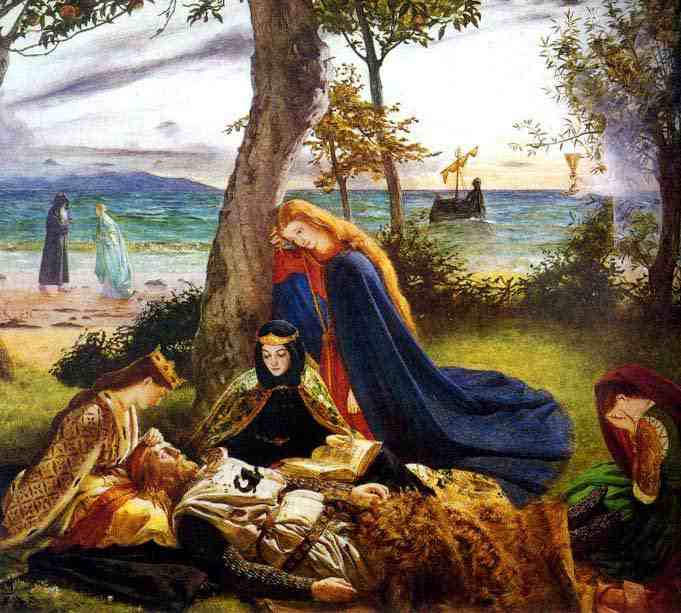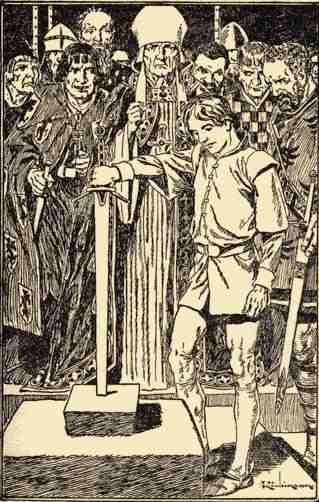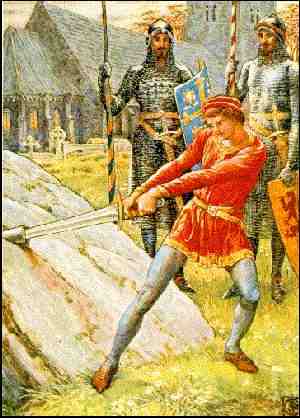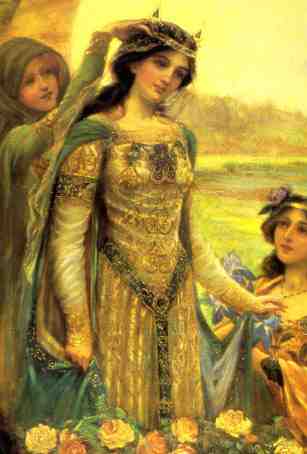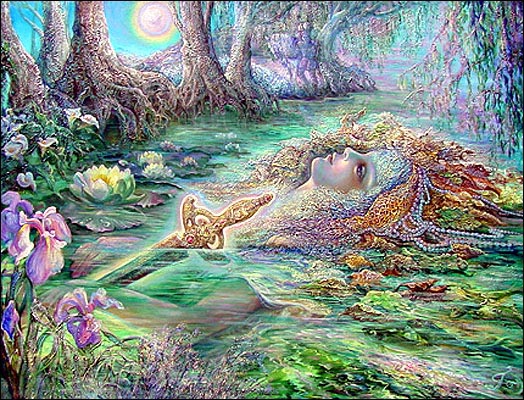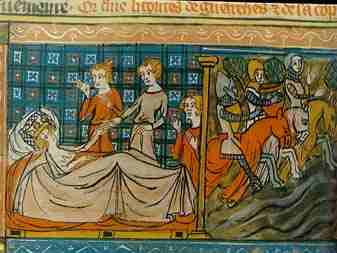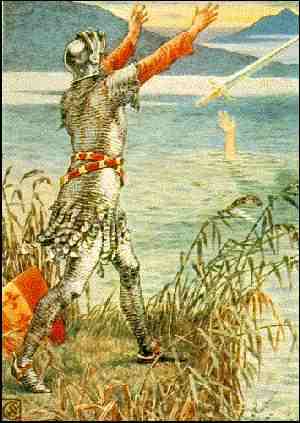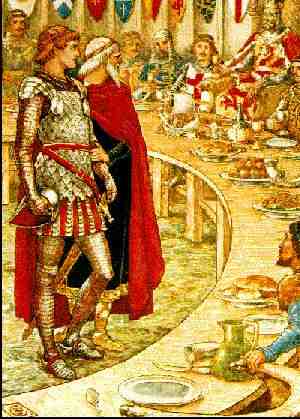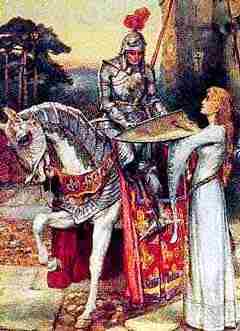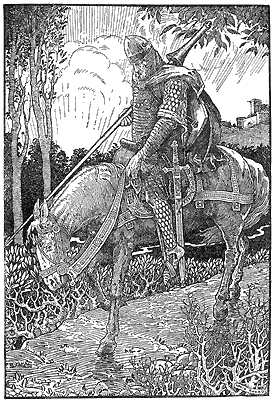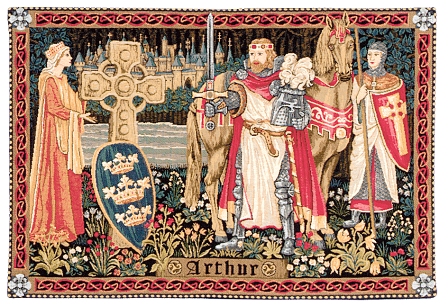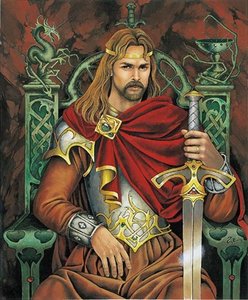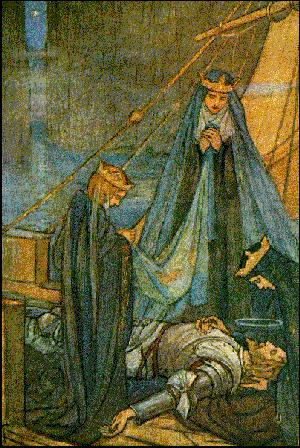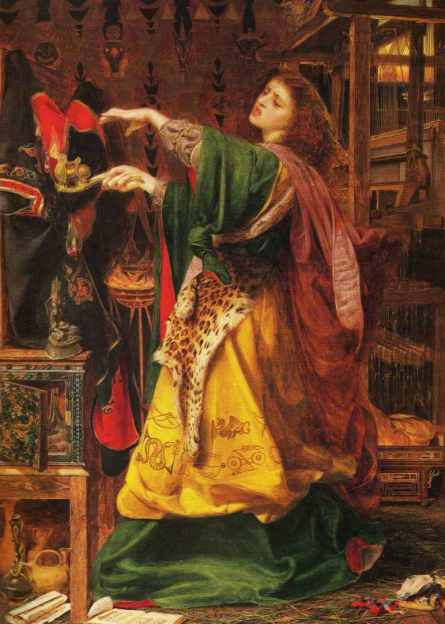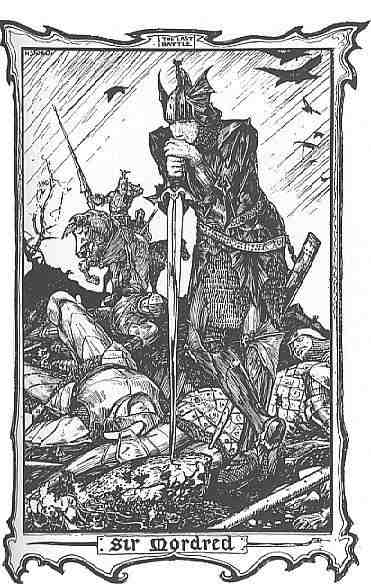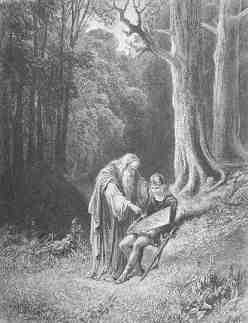AVALON
The Theosophy
King Arthur Pages
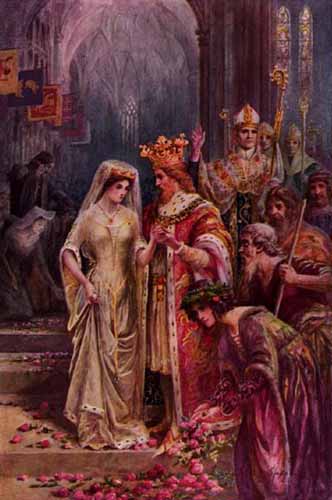
King
Arthur’s
Marriage
to Guinevere
Glossary of
Arthurian Legend
A
ARTHUR - legendary
king of the Britons in the 5th century or, perhaps a minor Welsh freedom
fighter; symbol of chivalric virtues, the ultimate
saviour of
AVALON - the
land of the dead, the place to which king Arthur was taken after his death.
B
Sir BEDIVERE -
the last knight, the only one who was by Arthur’s side after the last battle
(the
Sir BORS - a
pure and modest knight of the Round Table He survived the
in the Crusades.
C
CAMELOT -
Arthur’s royal castle. Numerous
sites are suggested as possible locations of Camelot, among others: Viriconium in
CODE OF
CHIVALRY - set of rules specifying an ideal of knightly conduct. Knights had to be brave and skilful in battle,
modest and generous towards
other men, gentle and courteous towards their ladies,
loyal to the sovereign, honourable in their deeds,
displaying endurance against adversities and discreet in love.These
ideals were later adopted by the medieval Crusaders.
CAMLANN - the
site of the last battle in which King Arthur died after he had struck the fatal
blow to the traitor, Sir Mordred
D
DOZMARY POOL -
a lake on Bodmin Moor in Cornwall, supposedly the
legendary lake into which Sir Bedivere cast
Excalibur, King Arthur’s enchanted sword
E
ELAINE - the
legends of the Round Table mention two Elaines:
Elaine of Astalot and Elaine of Corbenic.
Both were romantically involved with Sir Lancelot The
latter one was to become the mother of Sir Galahad.
EXCALIBUR -
the sword which a 15-year old Arthur drew out of the stone. Nobody before him was able to accomplish it. This
deed gave him royal
power over 30 kingdoms. Some confusion arises between
this and the Sword given to Arthur by the Lady of the
F
The FISHER
KING - keeper of the Grail. Bran, a hero of Welsh legend is suggested to be the
Fisher King. His castle may be Castell Dinas Bran, at
Llangollen, in Clwyd (
G
Sir GALAHAD -
son of Sir Lancelot and Elaine of Corbenic. Distinguished for his purity.
He succeeded in the adventures of the Siege Perilous and the Holy Grail.
Sir GAWAIN -
the son of King Lot of Orkney.
Best known from the legend
“Sir Gawain and the Green Knight” where he is a noble hero
undergoing a test of faith.
H
HOLY GRAIL -
according to legend, a chalice from the Last Supper into which Joseph of Arimathea collected Christ’s blood at the Crucifixion.
Another legend says that Joseph brought it to
powerful religious significance for the Christian Knights
of the Round Table that it became the main motif of the Arthurian stories.
I
IDYLLS OF THE
KING - a series of poems by Alfred Tennyson published between 1859 and 1885.
They present the story of Arthur, of the Round Table fellowship and of its
failure under the spreading influence of evil, caused by the sin of Lancelot
and Guinevere.
ISEULT - (or Isolde) the Irish Princess who was to marry King Mark of
bride-to-be. By mistake they drank a love potion to be given
to King Mark and Iseult to ensure their happy
marriage and they fell passionately in
love. When the King discovered their secret, Tristan
joined the Round Table fellowship.
J
JOYOUS GARD - the
name of Sir Lancelot’s Castle.
Malory speculated it may have been either Bamburgh or
K
KAY - Arthur’s
foster brother, his boyhood companion, later his faithful and lifelong servant.
L
Sir LANCELOT du LAC -the most famous of King Arthur’s Knights. The son of King Ban of Benwick, the lover of Guinevere and the father of Galahad.
His disloyalty to the King eventually led to the downfall and destruction of
Arthur’s Kingdom. Still he enjoyed the reputation of a fearless and bold
knight.
LADY OF
SHALOTT - published in 1852. A poem by Alfred Tennyson included in the „Idylls
of the King”. Also a famous painting by J. W. Waterhouse
LADY OF THE
healed of his wounds.Sir Lancelot was brought up by her in her underwater
kingdom.
LYONESSE -
Tristan was a prince of Lyonesse, which was flooded
by Merlin to drown Mordred’s knights when they
followed Arthur’s army after the
battle of Camlann. St
Michael’s Mount, off the Cornish coast is said to be part of the legendary
kingdom of Lyonesse, which extended as far as the
Isles of Scilly.
M
MERLIN - a
good wizard whose magic and advice helped King Arthur. He was the son of an incubus (a malevolent male
spirit) and a mortal woman, and therefore he was indestructible Eventually he was entrapped by Vivien, the Lady of the
for the kingdom.
Sir MORDRED -
(also Modred); the nephew of King Arthur, the son of
latter pursued Lancelot Mordred
traitorously seized the kingdom and Guinevere. Eventually, he was killed by
Arthur in the final battle.
MORGAN le FAY
- Arthur’s half-sister by the same mother. She studied magic under Merlin’s guidance. She
possessed the powers of healing, the
abilities of changing shape and of flight and was more
beautiful and skilful than any of her sisters. Her influence with time became
more and
more harmful.
MALORY, Sir
Thomas - (d. 1471), author of “Le Morte Darthur”.
He wrote most of the manuscript to keep himself occupied while in prison.
N
NENNIUS - (8th
/9th century) -
the traditional author of the “Historia Britonum”, one of the sources of our knowledge about
Arthur. He names 12 battles to which Arthur led the Britons against the Saxons.
O
ORIGINS of
Arthurian legends - they date back to the times between the decline and fall of
the
P
Sir PERCEVAL
(or Parsifal) - a knight who together with Bors and
Galahad went in quest of the Holy Grail.
He was so naive that he was commonly named „The Perfect Fool”. His bashfulness
did not let him ask the right questions of the warden of the Grail castle and
the Fisher King was not healed.
Q
QUEST of the
HOLY GRAIL - the story of the Quest of the Holy Grail was developed after the
fall of
1187. The
Crusades mirrored the Grail Quest. The Knights Templar who protected the
pilgrims on the road to the
themselves as the Keepers of the Grail and their surcoats with a red cross resembled Galahad’s
shield. The great medieval warriors like Richard the Lionheart
resembled Arthur’s knights. Richard is said to have given his sword (supposedly
Arthur’s sword) to Tancred, the ruler of
QUEEN
GUINEVERE - King Arthur’s Queen. She had an affair with Sir Lancelot, which led
to the destruction of the Round Table fellowship. In
Malory’s epic poem she survives Arthur’s death and enters
a nunnery
R
ROUND TABLE -
came with Queen Ginevere as part of her dowry. Its
roundness was in “the likeness of the world”. It could seat more than 100 knights
who were equal in status. Merlin found 50 outstanding and pious knights. 50
more were from Leodegrance (Guinevere’s father, king
of Cameliard).
They sat
together for the first time at the wedding feast of Arthur and Guinevere. This
is how the fellowship of the Round Table started. Another
version says that the Table was made by Merlin and given
to Uther Pendragon. Uther Pendragon, in turn, gave it
together with 100 knights to his son as a wedding gift.
S
The SIEGE
PERILOUS - a seat at the Round Table reserved for the knight who would achieve
the Quest of the Grail.
T
TRISTRAM - the story of his
love to Iseult is probably earlier than that about
Arthur and Guinevere and has its source in French literature. The son of the king of Lyonesses, a
skilful hunter and harper. The story of his
love is described under ISEULT. But there was also another Iseult
in his life whom he married. However, it was the
first Iseult, that of
TENNYSON,
Alfred (1809-92) - an English poet, author of “The Idylls of the King” and “The
Lady of Shalott” who used the medieval myth of King
Arthur to show the decline of civilisation.
U
UTHER
PENDRAGON - king
of the Britons and father of Arthur. In
Welsh, “Pendragon” means
“”chief leader in war”.
V
VIRICONIUM -
said to be the true capital of Arthur’s kingdom. It used to be a Roman city.
Now, only ruins are left. It is located close to
VIVIEN - the
name given to Lady of the
W
WAGNER Richard
- (1813 -83) German composer.
Parsifal was his last opera staged in 1882.
WACE, Robert -
(12th century) - Anglo-Norman poet, author of Le Roman de Brut
X
EXCALIBUR -
the sword which a 15-year old Arthur drew out of the stone. Nobody before him was able to accomplish it. This
deed gave him royal
power over 30 kingdoms. Some confusion arises between
this and the Sword given to Arthur by the Lady of the
Y
YANKEE - “A
Later a film.
Theosophy
Avalon

King
Arthur &
The
Round Table
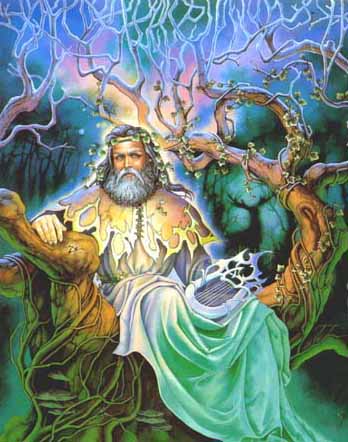
Merlin
& The Tree of Life
Merlin the Magician
Born circa 400 CE ;
Welsh: Myrddin;
Latin: Merlinus;
English: Merlin.
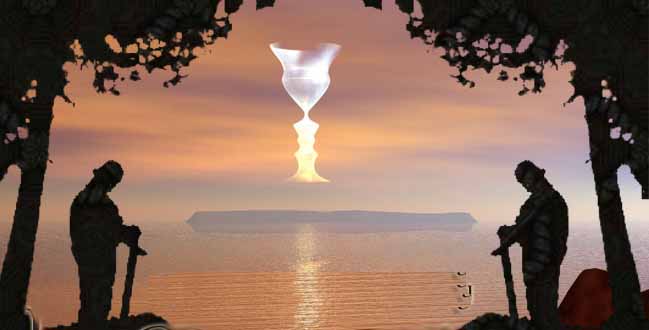
The
Holy Grail
The Theosophy
King
Arthur Pages
____________________
General pages
about Wales, Welsh History
and The History of
Theosophy in Wales
Theosophy links
The Most Basic Theosophy
Website in the Universe
A quick overview of Theosophy
and the Theosophical Society
If you run a Theosophy Group you
can use this as an introductory handout.
Independent Theosophical Blog
One liners and quick explanations
About aspects of Theosophy
H P Blavatsky is usually
the only
Theosophist that most
people have ever
heard
of. Let’s put that right
The Voice of the Silence Website
An
Independent Theosophical Republic
Links
to Free Online Theosophy
Study
Resources; Courses, Writings,
A selection of articles on Reincarnation
by Theosophical writers
Provided in response to the large
number of enquiries we receive at
The Voice of the Silence Website
The Spiritual Home of Urban Theosophy
The Earth Base for Evolutionary Theosophy
Theosophical
Glossary
Published
1892
A
B
C
D
EFG
H
IJ
KL
M
N
OP
QR
S
T
UV
WXYZ
Try these if you are looking
for a
local Theosophy Group or Centre
UK Listing of Theosophical Groups
Theosophy
House
Arthurian Picture Gallery
Arthur
Marries Guinevere
Death
of Arthur
Arthur
draws the Sword from the Stone
Arthur
draws the Sword for the Stone
Guinevere
The
Lady of the
Guinevere
lends her ring to Sir Lancelot
The
Round Table
Theosophy
House
Sir
Bedivere returns Excalibur to the Lake
Sir
Galahad brought before the Round Table
Lancelot
and Guinevere
Sir
Mordred
King
Arthur
King
Arthur
Death
of Arthur
Morgan Le
Fay
Theosophy
House
Merlin
instructs the young Arthur
Merlin
instructs the young Arthur
Theosophy
House
